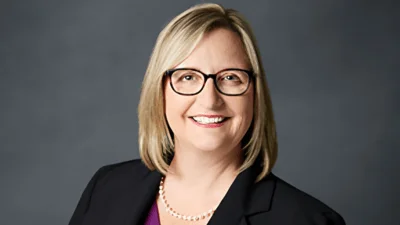Whether it’s helping a patient quickly schedule an appointment, seeing them in person at an OSF OnCall Urgent Care clinic or assisting them with navigating their OSF MyChart account, OSF OnCall is often the first point of contact for our patients.
“The OSF OnCall promise is to provide our patients with an always-available digital care platform, providing individuals with what they need to navigate their health and wellness journey – wherever they are,” said Jennifer Junis, senior vice president, OSF OnCall.
But how do our OSF OnCall Digital Health leaders deliver on that promise?
“With information,” said Junis.
However, much of the information the team needed to track progress and monitor trends was stored in different platforms, making it difficult to glean insights from the data.
“We live in a digital health world; that is our business as OSF OnCall,” said Melissa Shipp, vice president of Digital Experience with OSF OnCall. “Our patients expect us to deliver seamless, integrated care – and we have a commitment to provide them that. To do this, we knew we needed increased automation, speed and information available at our fingertips.”
With that, OSF OnCall worked with HealthCare Analytics to build a dashboard that includes data in three buckets, covering the digital experience, digital care and on-demand services. Now, leaders across the Ministry and others can go to one place and see how the digital health space is performing.
Developing the OSF OnCall Dashboard
OSF OnCall leaders and Healthcare Analytics began working on the dashboard in 2020.
“Our challenge was merging data that was already being collected with data from a completely new database,” said Ricky Hall, a data architect with Healthcare Analytics. “Once we brought the information together, all we had to do was integrate it into our data warehouse for easy access.”
From there, Healthcare Analytics designed the dashboard for people to easily digest the information they see.
“My challenge for the OSF OnCall Dashboard was making it accessible for everyone,” said Nathan Lorentz, senior business intelligence developer for Healthcare Analytics. “We have people in the Ministry who have varying levels of experience with data. So, my mission was to create a dashboard with no room for ambiguity.”
Created in a new style, the dashboard looks more like an infographic with bright colors and white space. The tool is part of an overall effort to increase data literacy across the organization.
What does the dashboard track?
The digital care portion of the dashboard collects any metrics related to OSF OnCall Intensive Care which oversees remote patient monitoring at many OSF hospitals. The on-demand services area pulls in data from OSF OnCall Urgent Care locations around the Ministry.
“With this dashboard, we can track patient outcomes for those in our intensive care program,” said Kyle Groenewold, director of digital optimization for OSF OnCall. “For our urgent care clinics, we can see how long it takes for a patient to receive care. All of these metrics give us the information we need to find opportunities for improvement.”
The dashboard’s digital experience hub gathers information about the contact center, where patients can talk to Mission Partners over the phone about everything from insurance questions and scheduling appointments to finding a provider.
“This allows us to see trends in call volume and how often people abandon calls,” said Shipp. “We can then determine whether we have the right processes in place and make better decisions for the patient experience.”
The most recent addition to the digital experience portion of the dashboard will collect data on self-scheduling versus staff scheduling. This comes after a successful pilot in the western region where patients could schedule various appointments themselves using OSF MyChart.
“This will give us an opportunity to understand that shift in the balance of people calling our contact center versus those who self-serve,” Shipp said. “It will also help us find out whether giving patients more control over scheduling will allow our contact center to focus on efficiencies, new opportunities and expansion for the Ministry.”
Overall, the dashboard integrates the data into a more useful tool and gives the teams transparency to quickly access the data they need to make improvements. It also provides transparency to a much broader audience.
“I think it’s amazing and we’re very blessed to have this,” said Shipp. “When I think about the Digital Experience teams’ goals, this dashboard helps us meet them by providing one place to go to quickly maneuver through various metrics whenever we want. And it’s all out there for transparency. I believe that’s where we all should strive as a Ministry.”






 Alerts Sign-up
Alerts Sign-up